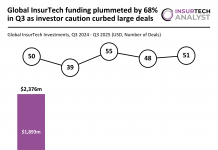Three years ago, a US insurance giant struggled to develop a Rules engine for their multiple user-facing applications. The project initially failed, leading them to enlist Symfa‘s expertise. Dmitry Denisko, senior software engineer at Symfa, delved into how the company reinvented the world of insurance business logic.
The project aimed to centralise the core business logic for the client, which was previously scattered across various applications. This new system needed to convert business logic into database entities, allowing users to create, edit, delete, view, and call these entities.
Despite the broad guidelines, Symfa’s development was guided by business requirements. Its objective was to centralise the company’s core business logic, which was dispersed across different applications, into a single system that could interpret these entities.
They were given complete freedom in implementation, allowing them to adapt and evolve their approach based on management feedback. Over time, the team expanded to eight members, achieving significant progress in a year.
Innovations in business rules management
The core concept Symfa developed is the “Workflow” – a collection of CPP business rules linked together, presented graphically.
The parent Workflow sits at the top and can contain multiple nested Workflows. Users can configure the Workflow via the UI and integrate it into their CPP applications. Each rule’s execution yields a success or failure result, which aggregates into a final outcome for the user: quote approved or rejected.
Its system can aggregate results using two methods, despite MS Rules Engine lacking a built-in mechanism for this. The first method uses a process handler, a hardcoded method within the application that handles aggregation.
For instance, if one rule returns “decline”, the entire flow is marked as decline. The second method involves grouping rules within the Rules engine, creating groups for different return values, which allows recursive grouping of rules.
Overcoming project challenges
Implementing this system presented several challenges. Firstly, Symfa had to devise a cross-environment implementation and deployment process. The firm developed a CI/CD process enabling rule migration across different environments (Development, UAT, Staging), mimicking a standard application release process.
They also implemented separate access rights to protect the live environment from unauthorised changes.
Secondly, maintaining a change history was crucial. Logging every transaction was memory-intensive and posed security risks. Instead, Symfa created an Evaluation History portal to log and review each workflow’s execution, including payload and response data.
This internal logging system allowed us to attach various UIs, generate reports, and monitor errors effectively.
Benefits of the micro low-code platform
Symfa’s micro low-code platform allows developers, business analysts, and users to write and execute their own logic.
It provides a centralised system where business rules can be extracted from applications, stored in a database, and reused or modified without altering the main code.
This platform is akin to an Admin panel for business logic, simplifying development while maintaining flexibility.
The benefits for the US insurance giant after a year of development were substantial. Previously, business rules were hard-coded and scattered across multiple teams, leading to inconsistencies.
Symfa’s centralised system now stores the main logic, enabling business analysts and trained users to make safe changes independently.
This project has significantly improved change management and traceability for the client’s insurance software, which encompasses over 1,000 business rules.
Read the full blog from Symfa here.
Copyright © 2024 InsurTech Analyst










